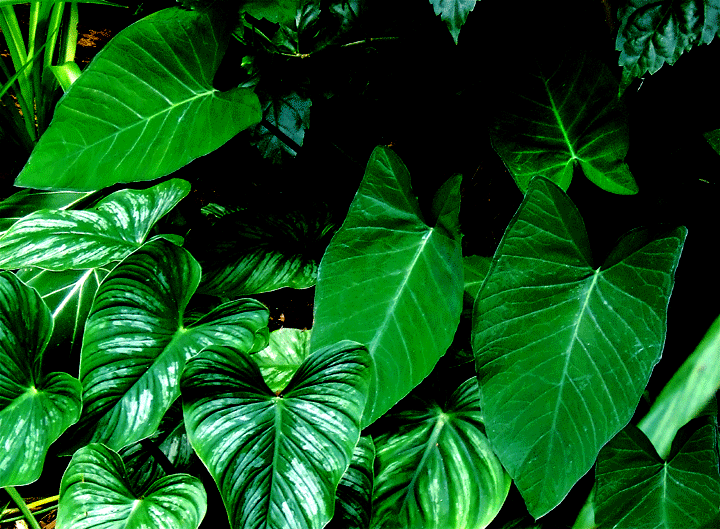![]()
Aroids and other genera in the Collection
Take the Tour Now?
Orchids
The
Exotic Rainforest
Images on this website are copyright protected. Contact us before
any reuse.
Xanthosoma violaceum Schott

There are three different species in this photograph. The plant in this discussion is located to the center right, Xanthosoma violaceum. Although not critical to this discussion, the species at the lower left is Philodendron mamei, and the center left (barely visible) is Philodendron glorisosum.
The genus Xanthosoma is composed of a group of approximately 50 species of tuberous perennials found in the semi-tropical US as well as in Central and South America. They are often grown for their edible leaves, and in the case of Xanthosoma violaceium, the petioles (or stems) which are purplish to violet in color. The leaves may be arrow to lanceolate (spear) in shape. The tubers (incorrectly called a bulb or corm) are also edible. Xanthosoma species are known to be highly variable and not every leaf of every specimen will always appear the same. This link explains in greater detail the scientific principle of natural variation and morphogenesis. Natural variation
Xanthosoma violaceum does not appreciate a temperature below 60F in winter and will go dormant. However, they can be grown as far north as Zone 7b but will vanish below ground once the temperatures begin to drop. The species should be grown in filtered shade or bright indirect light. Do not attempt to grow them in direct sunlight.
The species appreciates a moist composted soil which should be watered often in summer but less frequently in winter. Do not attempt to grow the plant in soggy soil as the roots are very likely to rot. Xanthosoma violaceum loves high humidity.
Please note: the plants at the bottom left of the photo with silver markings and center left are all Philodendron sp.
Want to learn more
about aroids?
Join the
International Aroid Society:
http://www.exoticrainforest.com/Join%20IAS.html